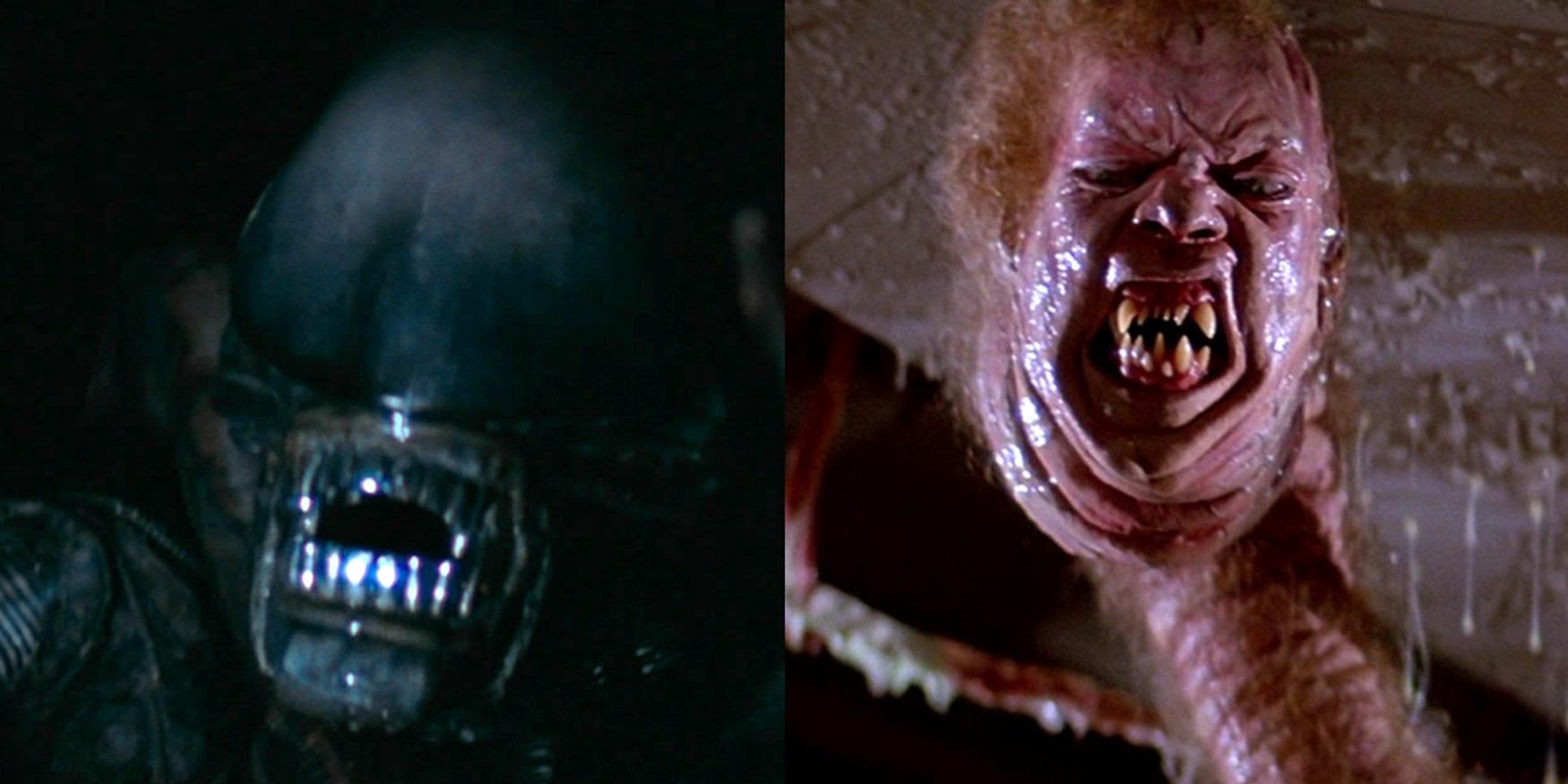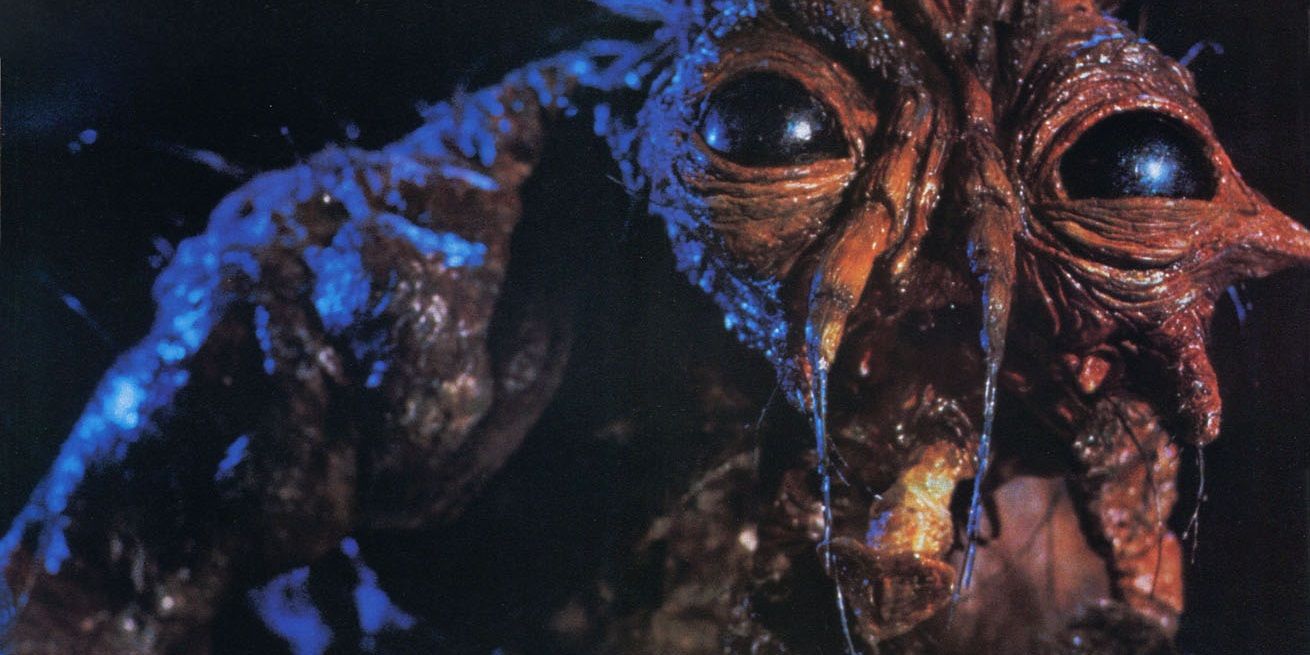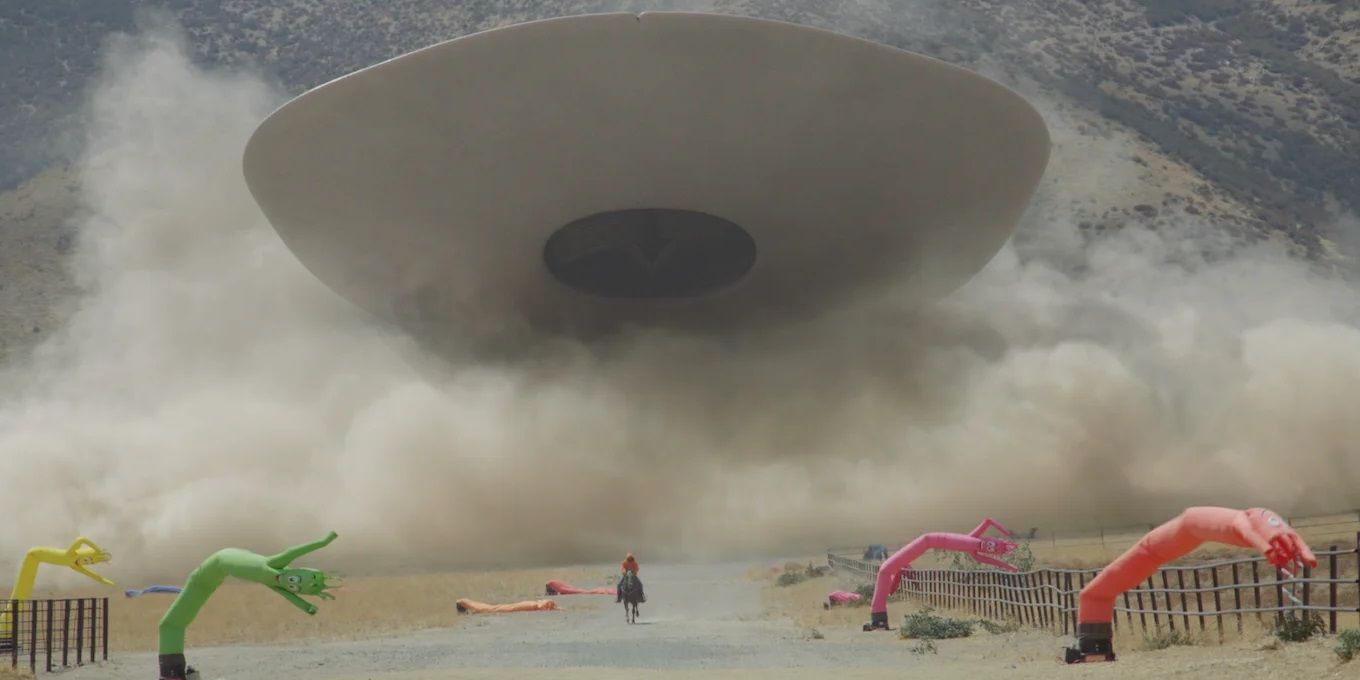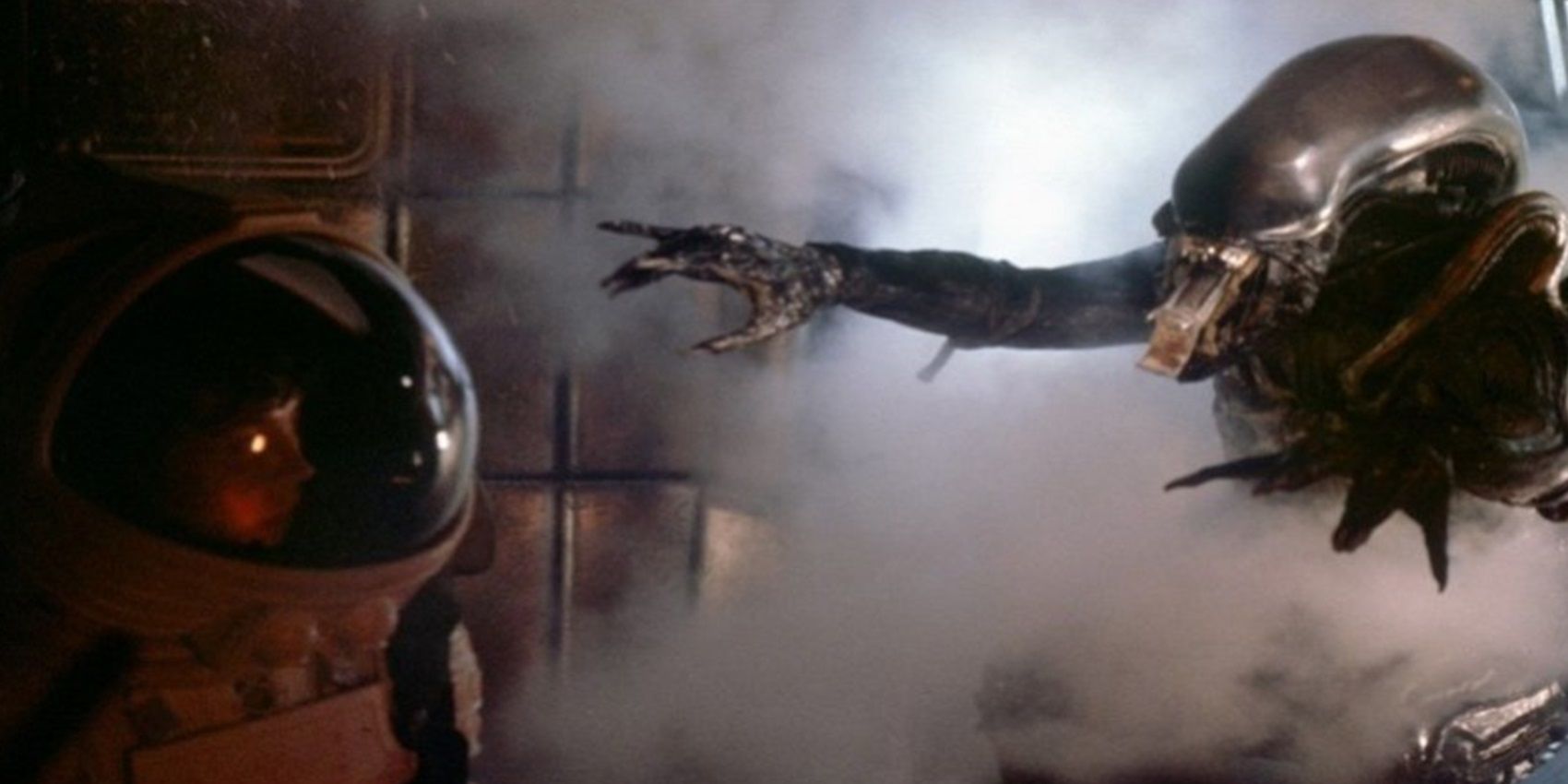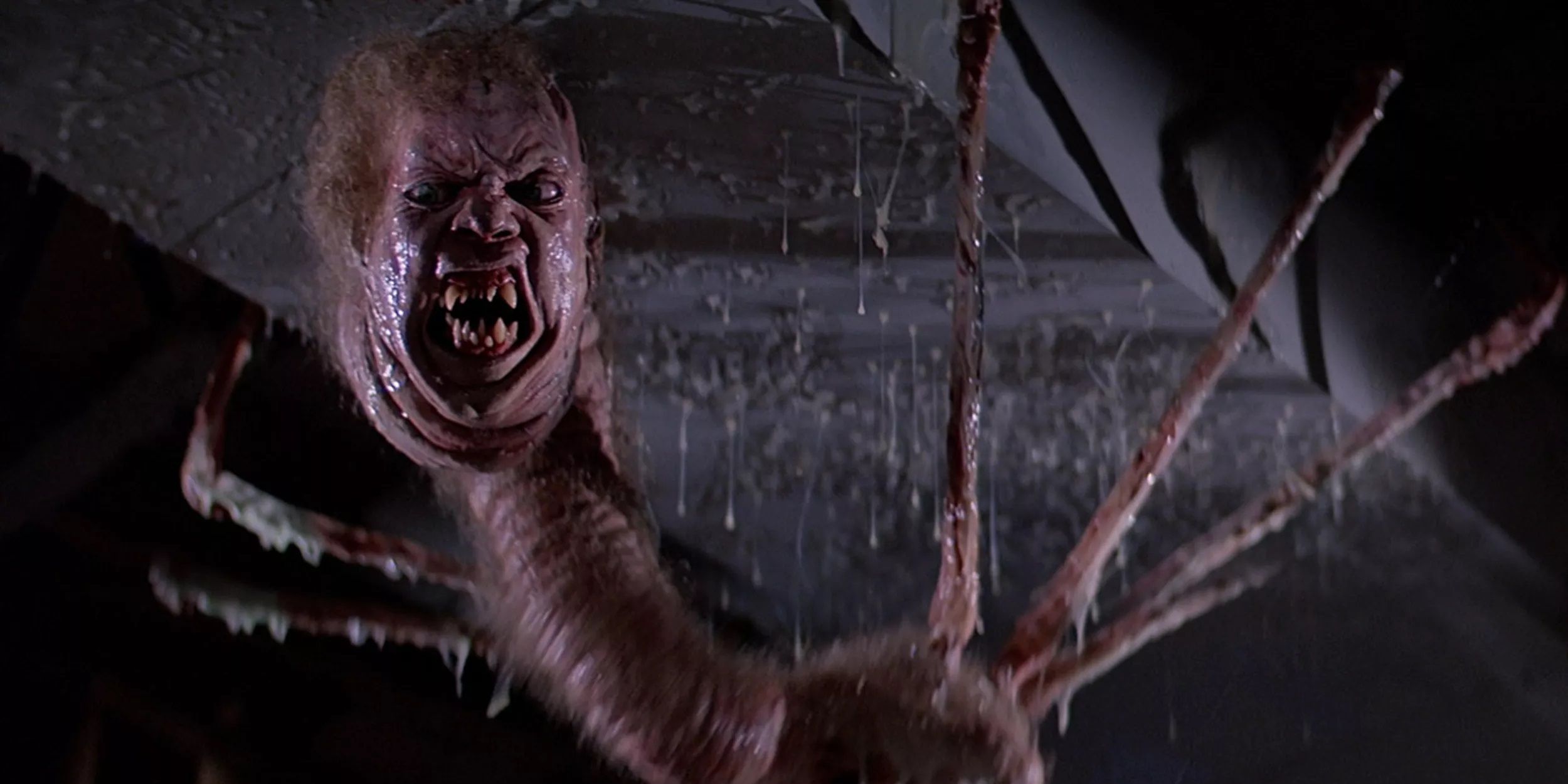Science fiction and horror have made for perfectly matched bedfellows in the sci-fi horror hybrid genre. From Alien to The Thing, sci-fi horror movies exhibit both the thought-provoking themes and speculative conceptual storytelling of science fiction and the abject terror and taut suspense of a horror film. This genre is full of unforgettable movie monsters, like the eponymous Predators in the Predator franchise, the aliens that see with their ears in A Quiet Place, and all the Lovecraftian beasts that emerge from the titular haze in The Mist. The most memorable ones, like Brundlefly, Jean Jacket, and the xenomorph, are both as scary as anything in a straightforward horror film and as imaginative and provocative as anything in a straightforward sci-fi film.
Brundlefly Is The Sympathetic Anti-Villain Of The Fly
Mary Shelley’s Frankenstein is considered to be the first true science fiction story ever written, and its poignant parable of a deranged scientific genius learning the dangers of playing God the hard way has been adapted in many different ways. From Jurassic Park to Avengers: Age of Ultron, various incarnations of the Frankenstein story can be seen all over pop culture. Body horror pioneer David Cronenberg’s take on the Frankenstein story, The Fly, sees Dr. Seth Brundle’s DNA merged with that of a housefly that gets into the machine during his experiments with teleportation.
“Brundlefly” (a portmanteau of “Dr. Brundle” and “fly”) is a quintessential sympathetic monster. He’s a hideous supernatural beast of his own creation who just wants to be loved. Jeff Goldblum was the perfect casting choice for this role, because he has the eccentricity to convincingly play a man who’s half-fly, but he also has the dramatic chops to play the human side as deeply, relatably human.
Jean Jacket Subverted The Expectations Of A Flying Saucer In Nope
Jordan Peele’s UFO thriller Nope evokes the familiar image of the flying saucer, but it also completely subverts the expectations of that trope. In traditional flying saucer narratives, the saucer is a spaceship transporting aliens from their planet to this one. But in Nope, the saucer isn’t a ship transporting the aliens; the saucer is the alien. In a commentary on its own audience’s addiction to spectacle, Nope revolves around a sentient UFO that abducts and digests anybody who looks up at it.
Dubbed “Jean Jacket,” this saucer is an awe-inspiring sight. For the majority of its appearances, Jean Jacket is a standard flying saucer. But in its final form, inspired by the classic mecha anime Neon Genesis Evangelion, it’s truly beautiful. Jean Jacket opens up like a butterfly, extends its colorful square-shaped eye, and floats into the sky, where it chokes on a big balloon and explodes – and Em finally captures irrefutable evidence of its existence on film.
H.R. Giger’s Xenomorph Design From Alien Is Hauntingly Inhuman
With his iconic production design on the original 1979 movie, then-unknown surrealist artist H.R. Giger defined the uniquely unsettling look of the Alien universe. Giger dreamt up the allegorically rich facehugger, the cold interiors of the Nostromo, and the chilling image of the “Space Jockey” that had audiences’ imaginations running wild. The crowning achievement of his Alien designs is, of course, the alien itself, later identified as a “xenomorph.” Standing at seven feet tall with jet-black skin and an unquenchable thirst for blood, the xenomorph is one of the most terrifying creations in cinema history.
The xenomorph looks just human enough to be identifiable, but Giger’s hauntingly inhuman touch takes every physical trait to the extreme with a giant head, a long, snaking tail, and a tall, slender figure. Every part of the xenomorph’s biology is designed to frighten audiences or raise the tension of a given story, from its acidic blood to the tiny additional mouth that hides inside its regular mouth to reach out and nip at prey that’s just a few inches out of reach.
The Shapeshifting Entity In The Thing Can Take Any Form
Based on John W. Campbell, Jr.’s 1938 novella Who Goes There?, John Carpenter’s The Thing revolves around an extraterrestrial parasite that can assimilate and imitate other organisms. Unlike Brundlefly or the xenomorph, the Thing doesn’t just have one resting form; it’s a shapeshifter that can morph itself into any lifeform it comes into contact with. From a visual perspective, this allowed special effects artist Rob Bottin to get creative with the different forms taken by the Thing. It assimilates a dog, an angry human face full of razor-sharp teeth, and sprouts big, spindly insect legs.
From a narrative perspective, it drives a wedge between the characters. Since the Thing could have taken the form of anybody in the room, nobody knows who they can trust, so they all quickly turn on each other. Kurt Russell’s lead protagonist, R.J. MacReady, sums it up perfectly: “Nobody trusts anybody now, and we’re all very tired.”

